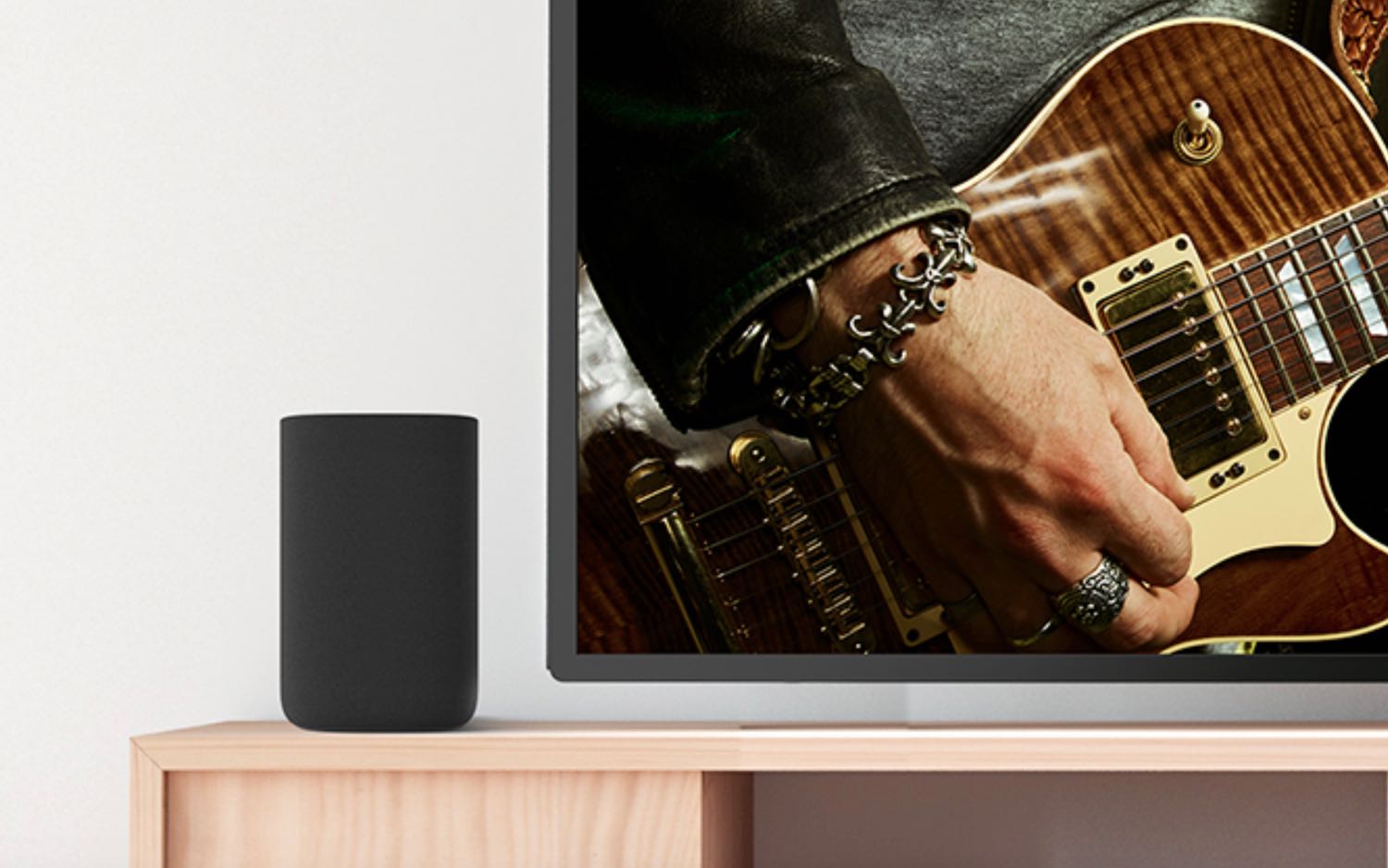Tom's Guide Verdict
Audiophiles who already own a Roku TV and want the simplest sound solution should consider the Roku Wireless Speakers.
Pros
- +
Easy setup
- +
Good sound quality
- +
Reasonable price
Cons
- -
Half-finished extra features
- -
Inconsistent Bluetooth performance
- -
Limited soundscapes
Why you can trust Tom's Guide
The Roku Wireless Speakers ($200) are the latest countermeasure against bad built-in TV speakers. Right out of the box, there's a lot to like about them. They provide solid sound through two distinct audio channels, they have some clever remote control options and they don't cost that much in relation to some of the truly extravagant soundbars out there.
Dig a little deeper, though, and you'll find a few steady annoyances that bring the whole experience down a notch. The speakers are compatible only with Roku OS TVs, inherently limiting their audience. The sound modes are useful, but extremely sparse. And the Bluetooth functionality, which lets you stream your own music, doesn't work all that well.
Audiophiles who already own a Roku TV and want the simplest sound solution should consider the Roku Wireless Speakers, but everyone else should consider more versatile options.
Design
The Roku Wireless Speakers are as straightforward as their name suggests. When you open the box, you'll find two identical black, semicylindrical speakers measuring 7.6 x 4.9 x 4.9 inches each. They're also a bit on the heavy side: 4.6 pounds apiece. (This is worth considering if you use a TV stand with weight restrictions.)
On the top, there's an indentation with the Roku logo, and on the bottom, there's a power port. That's pretty much it; you'll manage all the rest through the TV itself. The speakers don't connect to each other physically, meaning that you will need two separate wall-outlet plugs to power them. It's the first of many small irritations.
While the speakers aren't going to turn any heads, they have one big advantage over a traditional soundbar. Having two audio channels on either side of the TV rather than directly beneath or in front of it makes a huge difference, as anyone who has ever used a pair of PC speakers can attest. The trade-off is that the speakers take up more space, but it's a worthwhile one.
MORE: 15 Alexa Speakers, Ranked from Best to Worst
Get instant access to breaking news, the hottest reviews, great deals and helpful tips.
Bass aficionados should be aware that the speakers do not come with a subwoofer. In my experience, the bass is pretty good, but if you were planning an apartment-shaking house music party, these might not fit the bill.
Interface
One advantage of the Roku Wireless Speakers' simplicity is that the setup is nearly foolproof. Just access the menu of any Roku TV, tell it to scan for wireless speakers, and the rest of the process takes place automatically. (Well, almost automatically. You do have to tell the TV which speaker is on the right, and which is on the left.)

After a firmware update, you're ready to go. And if you'd prefer to use the TV's built-in speakers, for whatever reason, you can turn off the speakers with a single click in the audio menu.
At this point, it's worth reiterating that the Roku Wireless Speakers are compatible only with Roku OS TVs. Aboutone-quarter of the TVs sold in the United States run on this OS, so it's not a tiny percentage of users. On the other hand, though, that means the speakers won't work with 75 percent of TVs that Americans buy. It's an inherently limiting drawback, and one from which most soundbars don't suffer.
Once you have the speakers set up, you can toy around with a few different sound options: Volume Leveling, Night Mode and Speech Clarity. Volume leveling aims to keep everything you watch in the same decibel range; in other words, an errant commercial won't suddenly start shouting at you if you're watching a quiet show.
MORE: Bluetooth Speakers - News, Reviews and Top Picks
Night mode highlights dialogue and tones down jarring sounds like explosions and gunfire in case you want to watch TV without waking loved ones. Speech clarity amplifies frequencies where dialogue usually happens, pushing music and sound effects a little further back.
All of the new features work as advertised, although I didn't use any of them much during my testing. This is partially because the default sound profile is fine, and partially because toying around with them too much can start to wreak havoc on the soundscape that an audio engineer somewhere slaved away to create.
What I found strange about the audio settings, though, was that there were so few of them. Without the speakers, a Roku TV has access to a number of different equalization profiles, optimized for movies, games, sports and so forth. All of these options disappear once you hook up the Roku Wireless Speakers. They're arguably less necessary, since fine-tuning profiles can be a way of compensating for limited sound quality. But it's odd to buy an expensive peripheral just to decrease the number of options at your disposal.
Performance
One area where the Roku Wireless Speakers succeed is in sound quality. I watched some TV shows and movies on the device, including Marvel's Daredevil, Amazon's new adaptation of King Lear and Monty Python's Life of Brian, on both the TV's built-in speakers and the Roku Wireless Speakers. The difference was striking, partially because the Roku Wireless Speakers produce good sound, and partially because the built-in speakers don't.

While they're not up to the standards of some really expensive soundbars, the Roku Wireless Speakers can produce rich bass, clear dialogue, impactful explosions and pretty much anything else you'd want from your favorite shows and movies. I also tried out the speakers with a Nintendo Switch hooked up to the TV, and they handled my Hylian adventures in The Legend of Zelda: Breath of the Wild just as well.
While they're not up to the standards of some really expensive soundbars, the Roku Wireless Speakers can produce rich bass, clear dialogue and impactful explosions.
It wasn't until I tested some music that I realized the Roku Wireless Speakers are more of an everyday accessory than a true audiophile necessity. Listening to tracks from Flogging Molly, G.F. Handel, The Rolling Stones and Old Crow Medicine Show, the bass wasn't quite strong enough, and the vocals sounded a bit breathy rather than coming out crystalclear. It's still head-and-shoulders above most built-in TV speakers, but the sound is bold rather than subtle.
One area where the Roku Wireless Speakers don't deliver enough, though, is in their Bluetooth connectivity. The functionality is easy to set up, and sounds good when it works. But it's surprisingly laggy, cutting the first few seconds out of any song it plays, and losing even more time when you pause and restart songs.
MORE: Best Bluetooth Speaker Cyber Monday Deals
Music will also occasionally cut out and restart, even on strong wireless connections. If you turn off the TV screen, the music will also stop – even if you have purposely set your TV to fast-power mode to keep the speakers going with the screen deactivated.
Remote Control
The Roku Wireless Speakers come with two remotes: a standard Roku voice remote and a strange little square called a touch remote. There's no reason to belabor a description of the former; it's a little black rectangle with navigation buttons and a built-in mic for voice search. If you've seen a Roku product in the last four years or so, you know what it does. (However, it doesn't have a headphone jack, which some high-end Roku remotes offer. That would have been nice.)

On the other hand, the touch remote isn't quite like anything I've ever seen before. It's a small square with rounded edges, and it fits magnetically into the indentation on top of either speaker. It's not meant to control the whole Roku experience; just the music aspect. There are big buttons for play/pause, rewind and fast-forward, as well as one to activate the mic for voice searches.
What's more interesting, though, are the programmable 1 and 2 buttons in the upper-left corner. Here's how they work: You speak a command into the mic, such as "play classic rock" or "launch Spotify." You then hold down the 1 or 2 button, and it will save your command. This is a fantastic way to use the Roku Wireless Speakers without having to navigate through any menus – or even turn the screen on.
The speakers can work even with the TV off, provided you set it to fast-start mode. This takes some extra energy when the TV is off, but could save some power in the long run if you want to use the speakers without your TV screen. Weigh your options accordingly.
MORE: Amazon Fire TV Stick 4K vs. Roku Premiere: Face-Off
I have only two complaints about the touch remote. First: It probably adds a lot of expense to the package, but it's not really necessary. Only a handful of apps (including Pandora, Spotify and TuneIn) support screen-off functionality, and you need to turn the screen on to do anything more complex than play a randomized genre playlist, anyway. The device may be more useful in the future, but at the time of writing, it's more of a novelty.
And speaking of being more useful in the future, my second issue with the remote is its mysterious double-diamond button in the upper-right corner. At present, this button doesn't actually do anything, and Roku has been uncharacteristically tight-lipped about what it might do in the future. It's understood at this point that a company will add more features to a product as time goes on, but having a whole button that does nothing feels more unfinished than promising.
Bottom Line
The Roku Wireless Speakers solve a real, unavoidable problem with flat-screen TV sound quality. At the same time, they fall a bit short. Their limited compatibility and inconsistent extra features hint at a greater potential somewhere down the line, but for now, all you should expect from them is pretty good sound.
And for a lot of users, particularly those who like the Roku OS and have no desire to go through a more complicated setup process, that might be enough. The speakers aren't bad, especially considering the asking price, and they have just enough interesting extras to encourage users to do a bit of tweaking.
If you have a ton of money to spend, it's probably better to go with ahigher-end soundbar, which will provide more nuanced soundscapes and better compatibility. (You may not have a Roku OS TV forever, after all.) But if the Roku Wireless Speakers fit both your TV and your budget, you could do worse.
- More: Everything you need to know about Roku surround sound

Marshall Honorof was a senior editor for Tom's Guide, overseeing the site's coverage of gaming hardware and software. He comes from a science writing background, having studied paleomammalogy, biological anthropology, and the history of science and technology. After hours, you can find him practicing taekwondo or doing deep dives on classic sci-fi.

